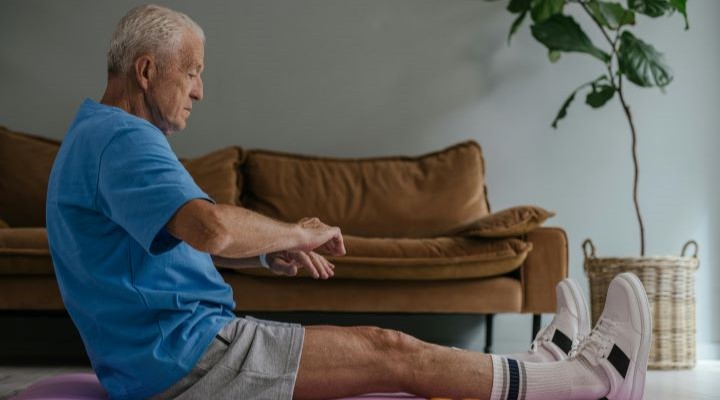
How Fitness Shapes Your Aging Process—From the Inside Out
You’ve heard it a hundred times: “Age is just a number.” But when your joints ache or your energy dips, it can feel like that number has more power than it should.
The truth? Aging is inevitable, but how we age is up to us in many ways.
At the National Wellness and Fitness Association (NWFA), we believe movement isn’t just about looking fit—it’s about staying strong, sharp, and functional at every stage of life. Let’s explore how fitness and aging are connected and how daily movement can shape the aging process from the inside out.
The Cellular Science: Telomeres and Biomarkers
At a microscopic level, our cells carry a key marker of biological aging: telomeres. These protective caps at the end of chromosomes naturally shorten as we age, but lifestyle factors, including exercise, can slow that shortening.
Multiple studies have shown that individuals who exercise regularly for longevity have longer telomeres than sedentary peers. That means fewer age-related diseases, stronger immune function, and potentially more years of vibrant life.
Beyond telomeres, regular activity influences critical aging biomarkers like inflammation, blood sugar regulation, and mitochondrial health. It is a massive part of how fitness slows aging from the inside.
Strength vs. Time: Fighting Muscle Loss with Age
One of the most visible signs of aging is the gradual decline in muscle mass, also known as sarcopenia. Starting as early as your 30s, you can lose up to 3–5% of muscle per decade if you don’t do anything about it.
The fix? Resistance training and consistent physical activity. Whether weightlifting, bodyweight exercises, or resistance bands, training your muscles helps maintain mobility, balance, and independence.
Fighting muscle loss with age isn’t just about aesthetics—it’s about preventing falls, improving bone density, and keeping your metabolism active.
Metabolism, Bone Health, and Beyond
Speaking of metabolism, it’s no secret that it slows with time. But many don’t realize this isn’t just because of age—it’s because of inactivity.
Regular exercise boosts metabolism and aging resistance by preserving lean body mass, increasing insulin sensitivity, and encouraging better hormone regulation. And let’s not forget the impact on bone health. Weight-bearing exercises like walking, strength training, or dancing help maintain bone density, reducing the risk of osteoporosis.
Even low-impact activities like yoga and Pilates improve balance, core strength, and joint integrity, offering protection against the wear and tear of daily life.
Brain Function and Mental Agility
Want to keep your mind sharp as your body changes? Physical movement has a profound impact on brain health. Aerobic exercise increases blood flow to the brain, enhances neuroplasticity, and stimulates the release of growth factors that protect neurons.
Studies show that older adults who stay physically active experience better memory, quicker reaction times, and lower rates of depression and cognitive decline. In short, healthy aging and exercise go hand in hand, especially regarding mental clarity and emotional resilience.
Aging Well Starts with Movement
Let’s be clear: exercise for longevity doesn’t mean grueling gym sessions. It means finding consistent, enjoyable ways to move your body—walking, swimming, cycling, resistance training, or gardening.
- 3x/week strength training to combat muscle loss with age
- Daily walking or light cardio to improve heart and brain function
- Flexibility and balance work to prevent injury
- Active hobbies that spark joy and connection
Conclusion
Aging isn’t something to fear—it’s something to train for. You can stay mobile, alert, and independent for decades with the proper movement habits.
At the National Wellness and Fitness Association (NWFA), we advocate for lifelong wellness strategies that support real health, not just in your youth but every chapter of your life. So whether you're 35 or 75, remember: every step, squat, and stretch is an investment in your future self.
Fitness and aging are deeply linked, and with consistent effort, you can age well, live longer, and thrive from the inside out.